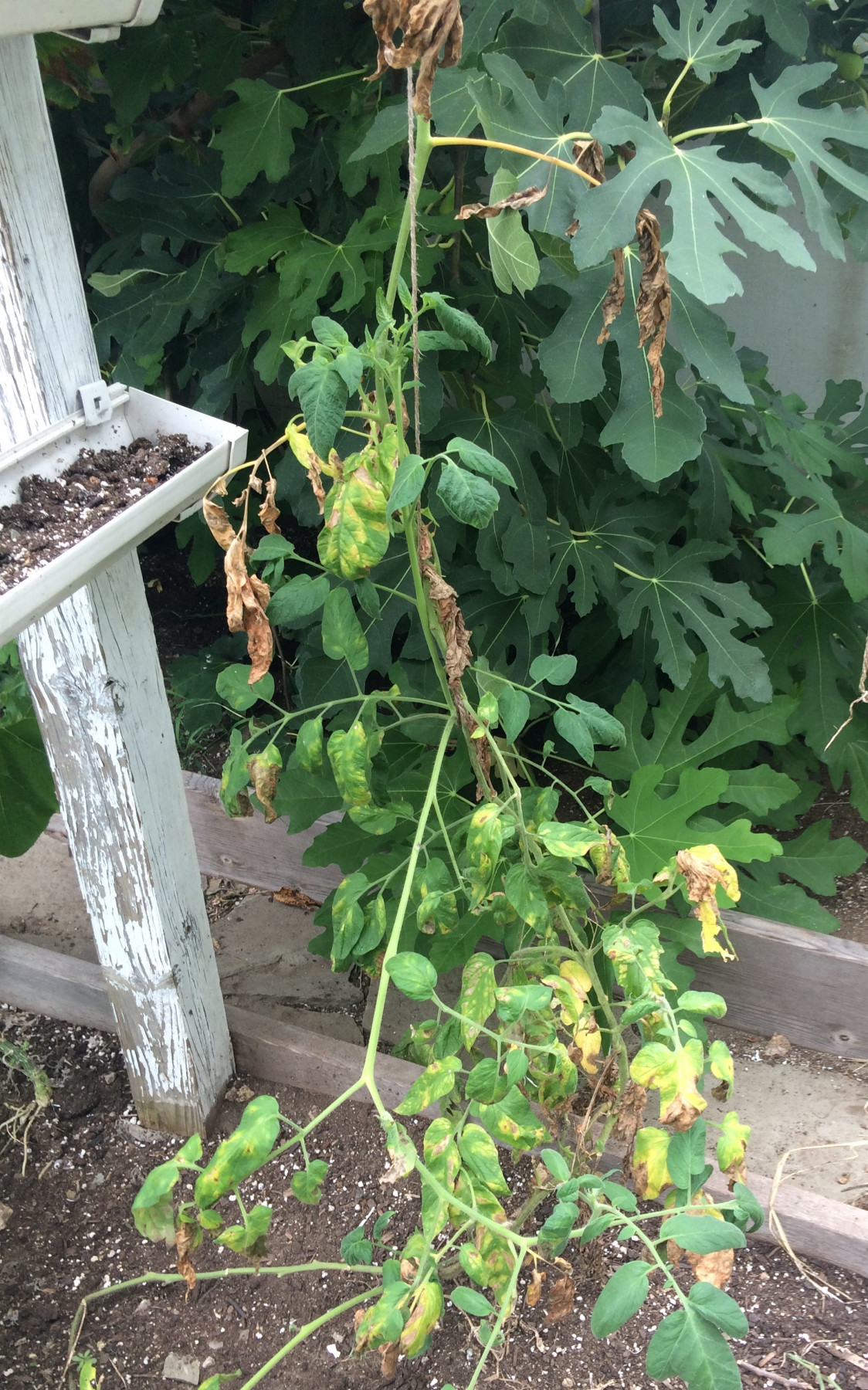
Here in Rhode Island, this summer has been one of the hottest on record, with more 90˚F (32˚C) days than ever before. Such high temperatures can easily overheat a greenhouse. If you’ve ever left your greenhouse doors and windows closed on a hot, sunny day, you may have seen the temperature soar above 120oF (49oC), causing your plants to wilt in the heat. Keeping greenhouse plants at the right temperature is critical to their success. Some plants, such as tomatoes, won’t set fruit if it’s very hot, while others are so heat sensitive that even temperatures above about 85oF (29oC) will cause them damage. So what can be done to avoid an overheated greenhouse?
To rapidly cool an overheated greenhouse, first open the doors and windows and then spray water on the plants and the floor. The water will lower the temperature through evaporative cooling, and it will also humidify the air to slow plant water loss through excessive transpiration. If you have fans in your greenhouse, turn them on to move the air and cool the plants more quickly. Shades on windows can also be pulled down to block out the heating effects of the sun.
It’s best, of course, to avoid an overheated greenhouse to begin with. To do this, these same three factors – ventilation, moisture, and shade – are all important.
Ventilation
Having plenty of ventilation is critical to keeping a summertime greenhouse cool. In a well-designed greenhouse, up to 25% of the glazing should be openable. Ideally, there should be vents not only at the roof ridge to let hot air flow out, but also vents near the ground to allow cooler air to enter. These ground-level vents, however, may sometimes let animals in, so screens on them are advised.
Automatic window openers can be very helpful in keeping a greenhouse ventilated, but bear in mind that they can have limitations. If your greenhouse is wood-framed, the wood will expand as humidity rises, which can cause automatic window openers to stick. Window openers can also be slow to react to temperature changes, causing the interior temperature to sometimes rise well above the set level before the vents open. So check these openers often to be sure they’re working correctly.
Fans are also a big help to greenhouse ventilation. They should be positioned to blow air over the tops of plants rather than directly on them. This will avoid over-drying the leaves, which can sometimes kill a plant. Many nursery growers have fans near the greenhouse roof to circulate the air but avoid drying out plant leaves.
Moisture
Keeping plants moist is another way of keeping them cool. Many greenhouses have fine sprays of water that put a mist of droplets into the air, which serves to cool the plants. But keep in mind that, while spraying is fine for many plants, there are some, such as African violets, that don’t like their leaves to be wet all the time. If you have plants that prefer drier conditions, try spraying only the greenhouse walkways and under the benches and tables to put moisture into the air without wetting the leaves of the plants.
Shade

Shades on the glazing are another way to help keep a greenhouse cool. The trick is to make sure that you fit the shades to best advantage. Interior shades are often preferable to exterior ones, which can rip or even blow off in heavier winds. Also be aware that roller shades that start at the roof ridge can sometimes cover the ridge vents and restrict air circulation. The best location for roller shades is just below the opening vent where they allow good airflow up the glazing and out of the vent.
Shade density is another factor to consider. Greenhouse shades come in various densities from 10% to 80%. The density that’s best for your greenhouse depends on the plants you’re growing. Cape Primrose (Streptocarpus), for example, will usually thrive in 30% to 40% shade, while some understory orchids might need shade of 50% to 70%. There are other plants for which shade is much less important. Dahlias, for instance, might only need 10% shade even on the hottest and sunniest days. So checks online to see what shade conditions your specific plants require. Like people, plants often appreciate such personalized attention.


